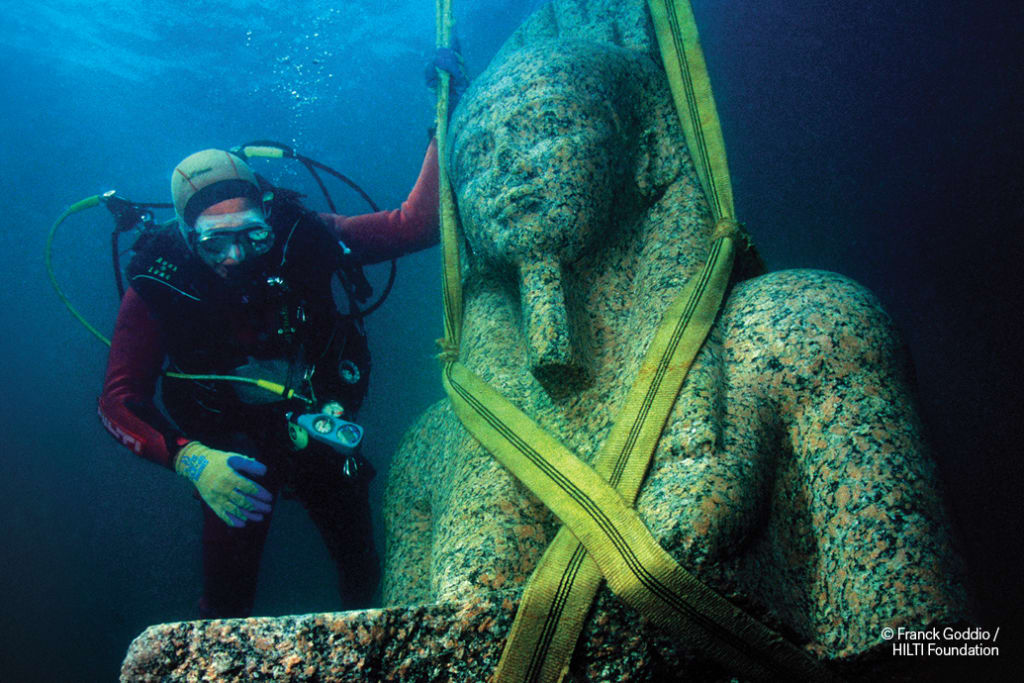
He remained for ages at the extreme edge of ancient Egypt, imposingly watching the Mediterranean-bound merchant ships come in. His name was Hapy, and he was the river's master and life-giving steward as well as the fertility god. A large gatekeeper made of red granite stood on his plinth at the western entrance to the Nile, guarding one of the world's largest ports.
The earth beneath Hapy's feet had not shaken or liquefied until one day, possibly near the end of the second century BC. Six tons of finely carved stonework smashed into the water as he swayed and lurched.
The remainder of the town that Hapy protected eventually did the same. A location steeped in antiquity's myths, where Sparta's Helen famously sought refuge with her kidnapper, Paris of Troy, and the location of the divine hero Heracles' first steps in Africa, vanished entirely under water and was buried, seemingly forever, by layer upon layer of sand and silt.
But in the early 2000s, a team of divers working off the coast of Egypt discovered a sizable rock chunk under the water and brought it to shore. It was an unbroken, salt-encrusted chunk of Hapy. After additional digging, they ultimately found six more. Other riches, including temple ruins, pottery fragments, priceless jewelry, coins, oil lamps, procession boats, and busts, were scattered among these artifacts.
The discovery of a tomb is thrilling for archaeologists, but it is the burial of a single person, according to Aurélia Masson-Berghoff, curator of the Sunken Cities exhibition at the British Museum. "Finding an entire metropolis that had been inhabited for well than a thousand years by thousands and thousands of people... That's something different, though.
Thonis-Heracleion was the address in question. And now, more than a thousand years after it was initially submerged, Hapy's city is rising once more.
"Part marshland, part sprawling urban area"
Few people now are familiar with Thonis-Heracleion, unlike Babylon, Pompeii, or the legendary Atlantis. In fact, until the amazing discoveries of recent years, it was possible that the waves of the Mediterranean would erase not only the city's physical remains but also its memory.
However, if you were a European trader in the fifth century BC, whether you were importing grain, perfume, or papyrus or exporting silver, copper, wine, or oil, Thonis-Heracleion loomed huge on your horizon. The same held true for Carian mercenaries, educated Greeks, seasoned sailors, and Pharaonic court members. Thonis-Heracleion, which is made up of a number of interconnected islands, sandbanks, and mudflats, was ancient Egypt's busy, cosmopolitan entrance to the Mediterranean and, consequently, its nexus with the western world. It is a hybrid of an aquatic wetland and an urban sprawl.
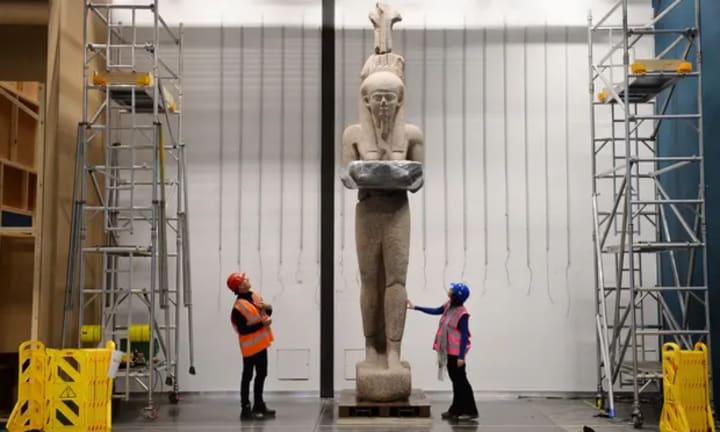
Thonis-Heracleion, which was established approximately 2,700 years ago on the location of what is now Abu Qir Bay, 15 miles northeast of Alexandria, predates its more well-known neighbor by many centuries as the principal emporion (trading port) for the region and was a center for international trade.
The city controlled the majority of the marine commerce entering Egypt from the Mediterranean. It was crisscrossed by a network of canals and was peppered with harbours, wharves, temples, and tower houses. These structures were all connected to one another by a network of ferries, bridges, and pontoons. At the customs administration center, goods would be examined and taxed before being transported further inland for distribution, either to Naukratis, another trading port almost 50 miles up the Nile, or via the Western Lake, which was connected by a waterway to the nearby town of Canopus and provided access to many other regions of the nation.
Despite the fact that Thonis-Heracleion and Canopus are referenced by several of the greatest historians of antiquity, including Herodotus, Strabo, and Diodorus, it was thought that most specific information about their existence had been lost forever.
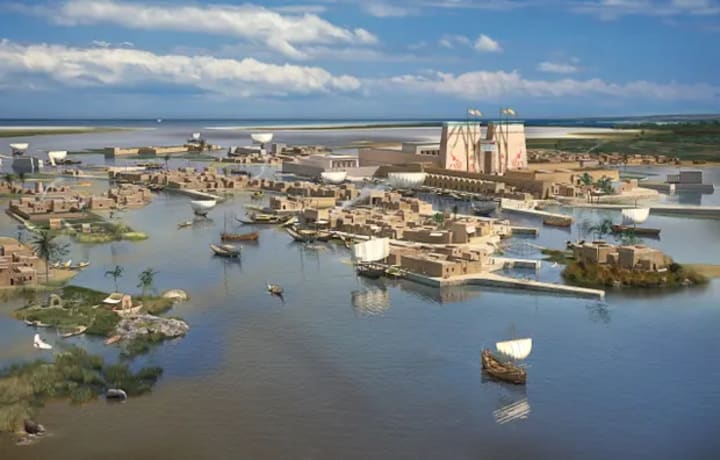
Most historians thought Thonis and Heracleion were two distinct conurbations that were both located on the modern Egyptian mainland until to 1933, when an RAF captain flying over Abu Qir spotted ruins in the sea. However, the pilot's observation marked the beginning of a whole new phase in offshore exploration. The presence of French warships that sank in the late 18th century first drew a team from the European Institute for Underwater Archaeology to the bay, and by the turn of the 20th century, they had produced a number of maps outlining the prehistoric topography of the area.
These maps, as well as the meticulous underwater excavation that has already taken place, were produced using cutting-edge surveying methods and countless hours of labor by humans. In the wake of storms, "the sea is all stirred up, charged with floating sand and mud that makes it difficult for us divers to see what is going on," one researcher stated, the waters here are murky and visibility is limited.
To determine the shifting depth of the ocean floor, archaeologists first used side-scan sonar, which works by firing pulses of sound energy at the seafloor and then analyzing the echoes. The presence of large objects was then determined and geological faultlines caused by the weight of long-submerged buildings pressing down on and shattering layers of sediment were identified. This was done using a nuclear magnetic resonance magnetometer, which can detect localized anomalies in the earth's magnetic fields.
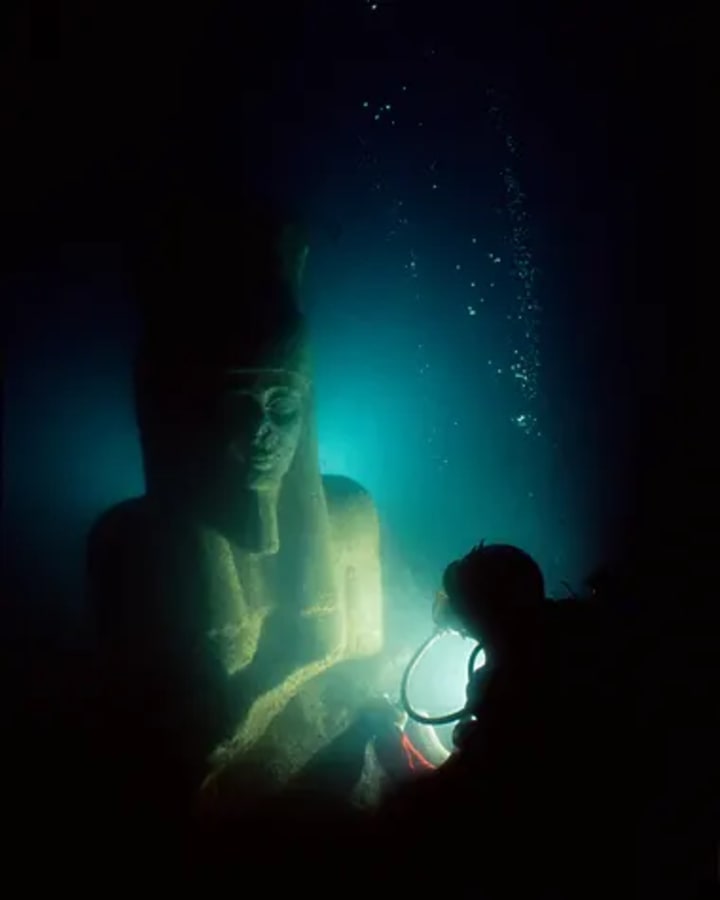
Scuba divers were sent in once the most promising excavation locations had been fixed. They brought water-dredges, which are enormous underwater vacuum cleaners that remove sand blankets from above to reveal the underlying archaeological strata. The largest artifacts, including building fragments and enormous statues, including a five-meter-tall Ptolemaic king and queen, were the easiest to recover from the seafloor. However, smaller, more unusual treasures, such as goblets, figurines, ritual pails, and 13 limestone animal sarcophagi, soon followed.
Each artifact was cataloged, photographed, and then—if it was safe to do so—winched up to the deck of the Princess Duda research boat for additional examination ashore. Together, they have revolutionized our knowledge of Thonis-Heracleion as well as the character of ancient Egypt and its contacts with the Hellenic world. According to Masson-Berghoff, "some of these objects are completely unique, of great historical or artistic importance." They encourage fresh ways of thinking.
For instance, the Decree of Sais, a beautiful black stele that rises two meters tall and is etched with well preserved hieroglyphics from the early fourth century BC, was discovered on the site of a temple to the supreme Egyptian deity Amun-Gereb at Thonis-Heracleion. The stele exposes some of the nuances of Egyptian taxes in the present day: According to its proclamation, "His Majesty [Pharaoh Nectanebo I] commanded: Let there be given one-tenth of the gold, of the silver, of the timber, of the processed wood, and of all things coming from the sea of the Hau-Nebut [the Mediterranean]... to become divine offerings to my mother Neith."
But the stele has contributed to our knowledge of ancient Egyptian taxes in more ways than one. Its discovery also contributed to the resolution of a long-standing puzzle: experts were able to determine that Thonis and Heracleion were not, as previously thought, two separate towns, but rather one single city known by both its Egyptian and Greek names, respectively, by comparing it to other inscribed monuments.
Thonis-Heracleion's ruins are a constant reminder of the interaction between Pharaonic and Greek societies: Hellenic helmets were discovered nestled in the seabed alongside their Egyptian counterparts, along with Cypriot statuettes and incense burners, Athenian perfume bottles, and antiquated Greek ship anchors.
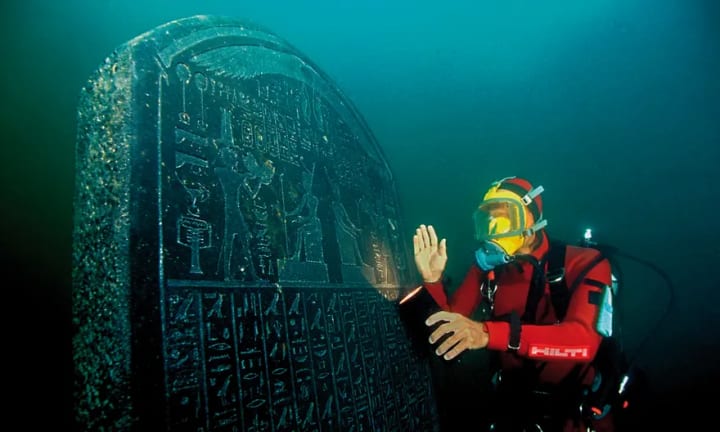
Nowhere was this cross-cultural blending more pronounced than in the area of religion, especially during the ascendance of the Ptolemaic dynasty in Egypt, when a string of foreign-born kings attempted to establish their legitimacy in the eyes of the Egyptian populace by demonstrating their affinities with Pharaonic traditions.
A 2,000-year-old stone figure of Cleopatra III, a Ptolemaic queen who is represented as the Egyptian goddess Isis and was fashioned in a manner that mixes both regional and Hellenic aesthetics, is one item that was found in the water.
The artifacts linked to the city in play are among Thonis-Heracleion's relics that are most alluring. The preparation of two statues of Osiris, the god of the underworld and resurrection, in the secrecy of the temples was a part of the annual celebration of the Mysteries of Osiris, which was observed throughout ancient Egypt. One statue was made of dirt and barley, and the other was made of expensive materials, including ground-up semi-precious stones.
The former was planted in a granite tank and maintained with Nile water until it sprouted at Thonis-Heracleion. After being loaded onto a papyrus barge with 33 other boats, the flotilla finally proceeded down to the adjacent village of Canopus while being lighted by 365 oil lamps, one for each day of the year. Archaeologists have discovered many miniature lead reproductions of the papyrus boats that were tossed into the sea as votive offerings by bystanders, in addition to an 11-meter sycamore vessel that would have been used in this procession.
Instead of only providing a liturgical portrayal of ancient ritual, these discoveries provide a rare window into its actual execution. They offer a link to the "materiality" of religion in Thonis-Heracleion, in the words of Masson-Berghoff. This is significant because, although the artifacts recovered from the depths of Abu Qir Bay tell a magnificent tale of a city that may have utterly disappeared from our awareness, it is, at least for the time being, a very selective one. Those who are currently working on it are well aware of its flaws.
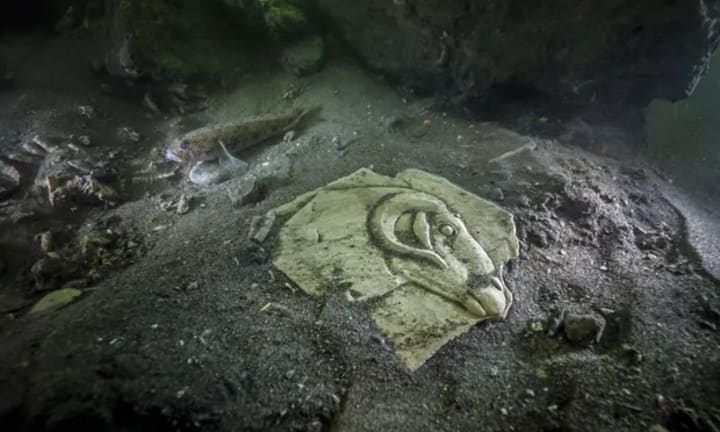
While we know more than ever about Thonis-Heracleion's rulers and priests, Masson-Berghoff notes that it is much harder to picture the mudbrick homes and daily lives of those who served them and kept the busy port operating smoothly. "My hope is that future discoveries will enable us to shed more light on the lives of ordinary people," he adds.
Currently, 95% of the region is still unexplored, so possibly there are still artifacts to be discovered that can help us better comprehend how cargo unloaders, cleaners, and cloth-sewers experienced their city. As the director of the continuing excavations, Franck Goddio notes, "What we know now is just a fraction." "Our search is still in its early stages."
By the second century BC, the glory and affluence of Thonis-Heracleion had already begun to fade. The land-and-sea foundation of Thonis-Heracleion had begun to look less solid as Alexandria, a new city higher up the coast, swiftly became known as Egypt's top port. Not just one natural calamity, but a combination of them, including an earthquake, a tsunami, rising sea levels, or subsidence, destroyed the city.
The center island, which was already drooping under the weight of the great temple buildings, succumbed to liquefaction around the end of the century, perhaps following a strong flood. The firm clay soil turned to liquid in an event that must have been horrific, and the structures on top of it fell into the water in a flash. A few stubborn citizens hung onto their dwellings throughout the Roman era and even into the start of Arab control, but the final traces of the city vanished beneath the water around the end of the ninth century, suggesting that the flow of pottery and coinage into Thonis-Heracleion had come to a stop at this time.
Perhaps it is not unexpected that we find the story of Thonis-Heracleion to be so captivating in light of the impending ecological disaster. Its recovery is a monument to modern technology and human ingenuity, but the city's destiny - and the uncannily lifeless remnants of a long-gone urban life - serve as a warning of how vulnerable many of our own modern cities are.
The Mediterranean coastline of Egypt remains one of the places on earth most vulnerable to rising sea levels, Venice, arguably Thonis-Heracleion's closest modern cousin due to its location on a lagoon and its famed network of waterways, is sinking, and even the most optimistic projections of global temperature increases could still force millions of people in the region to leave their homes.
A millennia in the making, Happi's reawakening from the seabed offers a singular view into our urban history. He and his city are not also a picture of our future, and the fight goes on to prevent that.
About the Creator
Enjoyed the story? Support the Creator.
Subscribe for free to receive all their stories in your feed. You could also pledge your support or give them a one-off tip, letting them know you appreciate their work.






Comments
There are no comments for this story
Be the first to respond and start the conversation.